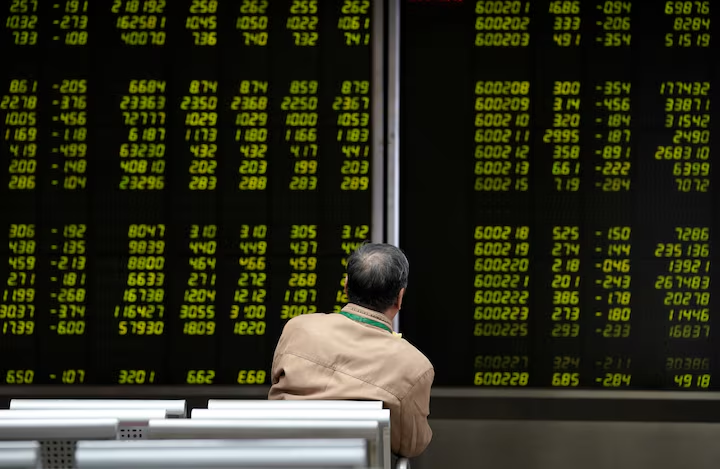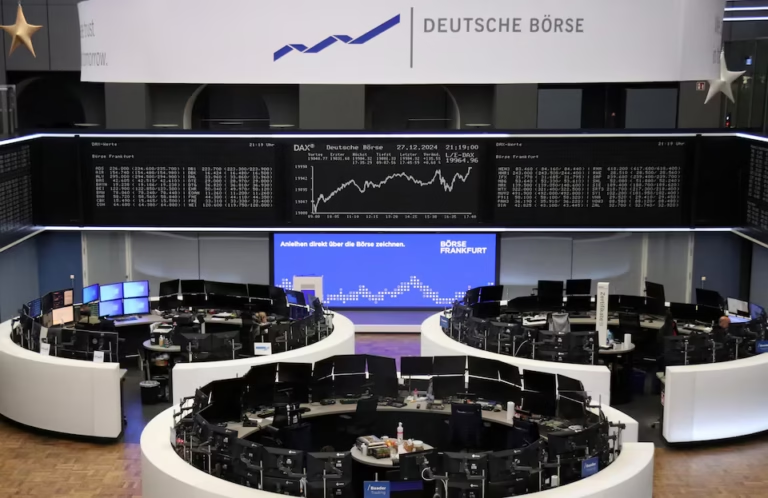By Jiaxing Li
Hong Kong (Reuters) – Chinese Stocks Achieve First Annual Gain After Three-Year Decline in 2024, despite a slight dip on the year’s final trading day. Hong Kong shares also finished the year on a high note, buoyed by optimism around policy support measures.
The blue-chip CSI 300 Index, which tracks the largest companies listed in Shanghai and Shenzhen, rose by an impressive 14.7% for the year. This marked a significant recovery following a prolonged downturn that began in 2021 due to the COVID-19 pandemic, a crisis in the property sector, and waning consumer confidence.
Similarly, the Shanghai Composite Index gained 12.8% over the course of the year, breaking a two-year losing streak. Meanwhile, Hong Kong’s benchmark Hang Seng Index edged up by 0.1% on the last trading day, closing 2024 with a substantial annual gain of 17.7%, ending four consecutive years of losses.
Policy Measures Drive Recovery
The robust performance of Chinese equities in 2024 surprised many investors. “Within the equities markets, China’s performance came as a positive surprise to many investors,” analysts at Value Partners noted in a report earlier this week.
The turnaround can largely be attributed to bold policy interventions rolled out by Chinese authorities during the second half of the year. These measures included interest rate cuts, home purchase incentives, and innovative funding schemes to boost stock market activity.
“Various supportive measures announced during the second half of the year, which targeted monetary policy, the property market, and capital markets, largely surpassed expectations and overshadowed ongoing economic concerns,” the Value Partners report stated.
China Asset Management echoed this sentiment, highlighting that stabilizing the capital market has become a critical policy priority. The firm’s analysts noted that the market appears to be bottoming out, with investor sentiment improving significantly.
Sectoral Gains Lead the Way
Among the standout performers in the Chinese markets were banking stocks, which posted an impressive 34.7% gain for the year. The four largest state-owned banks reached multi-year highs, reflecting strong investor confidence in the sector.
The chip sector also surged, climbing by 53.9%. Domestic investors aggressively boosted holdings in local semiconductor firms as the U.S. tightened restrictions on Chinese chip imports. This rally underscored China’s strategic emphasis on strengthening its domestic technology capabilities in the face of external trade challenges.
Despite the strong yearly performance, mainland stocks experienced a slight pullback on the final trading day, with the CSI 300 benchmark falling by 1.6%. The decline came after data revealed that China’s factory activity grew at a slower pace in December, raising concerns over potential headwinds from rising trade risks.
Policy-Driven Market Optimism
The market’s recovery in 2024 has been largely fueled by policy-driven optimism. Chinese leaders held several key meetings toward the end of the year to outline strategies for sustaining economic growth and boosting market stability.
Dai Qing, a strategist at Changjiang Securities, noted that the market is entering the final phase of “policy expectation-driven” trading. According to Dai, the favorable policy environment is expected to provide continued support to the market in early 2025.
However, Dai cautioned that market disruptions could arise with the inauguration of U.S. President-elect Donald Trump in January 2025. Geopolitical and economic uncertainties associated with the new U.S. administration may impact investor sentiment in the near term.
Outlook for 2025
Looking ahead, analysts predict that dividend-paying stocks could outperform the broader market, particularly in the short term. These stocks are seen as a safer bet amid ongoing global uncertainties, including geopolitical tensions and fluctuating trade policies.
China’s commitment to implementing pro-growth policies is likely to remain a key driver of market sentiment in 2025. The government’s focus on stabilizing the property market, improving consumer confidence, and fostering technological innovation will be critical for sustaining economic momentum.
In the technology sector, investments in semiconductors and AI are expected to accelerate as China continues to counter external trade restrictions. Meanwhile, the banking sector could see further gains, supported by policy measures aimed at enhancing liquidity and reducing systemic risks.
Challenges and Risks
Despite the optimistic outlook, potential risks remain. Slower-than-expected economic recovery, rising trade tensions, and global market volatility could pose challenges in the coming year. Additionally, the impact of geopolitical events, including shifts in U.S.-China relations, will likely influence investor sentiment.
Nonetheless, the broad consensus among analysts is that the Chinese market has turned a corner. The substantial gains in 2024 have laid a strong foundation for sustained growth, with supportive policies expected to continue fostering a favorable investment environment.
As China enters 2025, the focus will remain on maintaining market stability, restoring domestic confidence, and driving long-term economic growth. These efforts, coupled with investor optimism, are likely to shape the trajectory of Chinese equities in the coming year.






